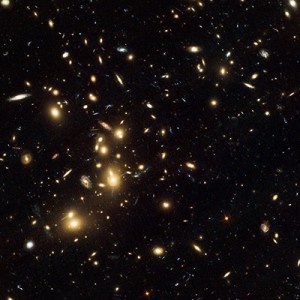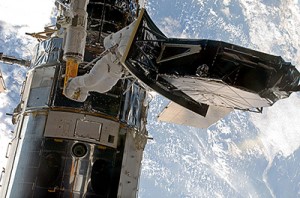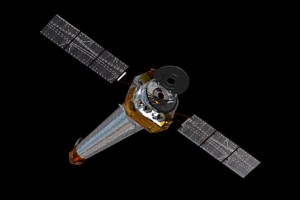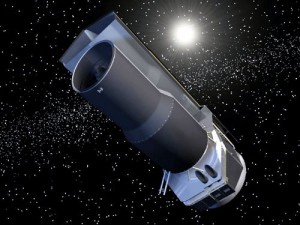Three of NASA’s most capable space telescopes are joining forces for “Frontier Fields,” a three year campaign to study six of the most massive galaxy clusters in the universe.

Pandora's Cluster will be the first target of the Frontier Fields Campaign. Image Credit/Space Telescope Science Institute/NASA
They will start with Abell 2744, also known as Pandora’s Cluster, a collection of at least four smaller galaxies that merged over 350 million years.

Shuttle astronaut Drew Feustel, wearing a white space suit in the middle of the image, works on the Hubble Space Telescope. Photo Credit/NASA
When the program is complete, astronomers expect to uncover stellar objects 100 times fainter than either of the telescopes could spot individually, peer into the hearts of the star systems at super massive black holes and expose new details on how the universe evolved.
“The Frontier Fields program is exactly what NASA’s great observatories were designed to do; working together to unravel the mysteries of the Universe” said John Grunsfeld, associate administrator for NASA’s Science Mission Directorate in Washington. “Each observatory collects images using different wavelengths of light with the result that we get a much deeper understanding of the underlying physics of these celestial objects.”
Frontier Fields will also use the tremendous gravitational forces of the six clusters to study the influence of dark matter and take advantage of gravitational lensing. The lensing bends and magnifies the light streaming from objects far more distant than the galaxy clusters to expose even more of the distance universe to the three space telescopes.
The idea is to use nature’s natural telescopes in combination with the great observatories to look much deeper than before and find the most distant and faint galaxies we can possibly see,” said Jennifer Lotz, a principal investigator with the Space Telescope Science Institute (STScI) in Baltimore, Md.
Hubble was launched into Earth orbit in 1990 and was last upgraded by space shuttle astronauts in 2009. The Chandra, which orbits the Earth in an elongated trajectory followed in 1999. They were joined by the Spitzer infrared space telescope, which trails the Earth as the planet orbits the sun, in 2003.
Hubble and Spitzer data will be combined to calculate distances and masses of these objects with new accuracy. Chandra will peer deep into the star fields and focus on the identification of supermassive black holes.


